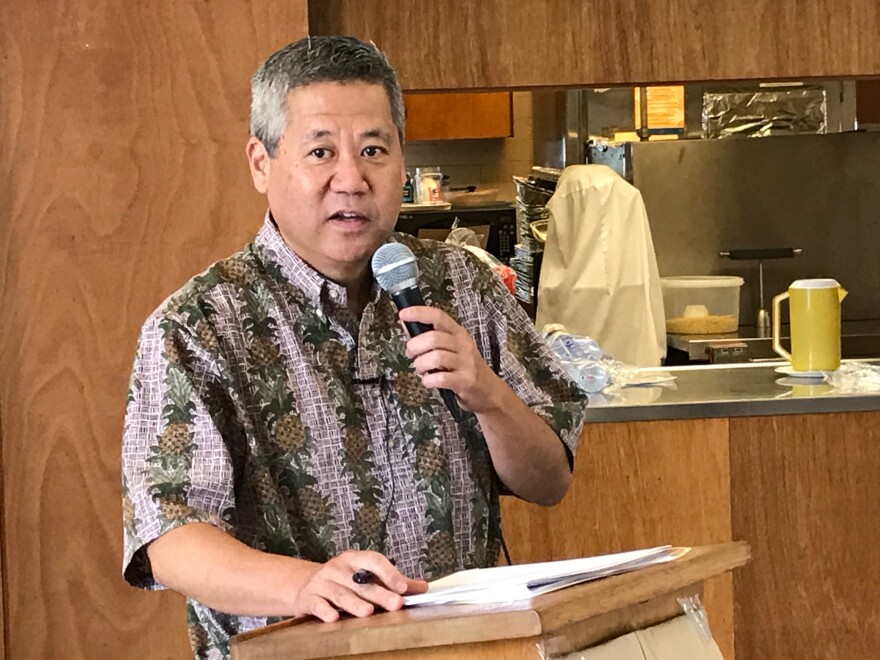The State Legislature is considering a number of ways to ease homelessness statewide. But, for one key lawmaker, the way forward is a community solution. HPR’s Wayne Yoshioka reports.
When completed, Kahau’iki Village near Ke’ehi Lagoon will provide 160 rental units for homeless families on O’ahu, an estimated 600 adults and children. House Speaker,Scott Saiki, says Kahau’iki is an example of government and the private sector working together toward a common goal.
“So the legislature’s role will basically to designate state land that can be used for a village and second, to help to make sure that there’s sufficient infrastructure for the village.”

Saiki says the challenge for lawmakers would be to provide subsidies for chronically homeless individuals with substance abuse issues or mental illness. Businessman, Duane Kurisu, who spearheaded the Kahau’iki project with the state, county and private sector donors…says the goal is to provide more than shelter.
“Our organizing team, who have had experience growing up in plantation towns, modeled it after the way we grew up and we could say that even if our houses didn’t look too nice, at least we can say we lived with dignity. And so that’s what our core is in building Kahau’iki Village.”
Kurisu says the focus for Kahau’iki Village was to strengthen families with children by turning their lives around. Institute for Human Services

spokesperson, Kimo Carvalho, says I-H-S is operating the first completed phase of Kahau’iki Village, providing families with case workers and social services on site.
“Right now, we do have 30 families that just moved in to Kahau’iki Village. There are 18 tw-bedroom units, twelve one-bedroom units, a total of a 115 residents here that are comprised of 51 adults and 64 children. So, those 64 children, range from infant all the way up to 12 years old. And, you know, these are kids that are given an opportunity that can really end that cycle of poverty. That’s gonna save the state millions of dollars down the road.”
House Speaker Saiki, meanwhile, says there are no specific bills underwriting the project but he’d like to at least see the beginning.
“This model should be a statewide model. I’m hopeful, this year, the legislature can establish some pilot programs just to see if we can basically create the formula and duplicate this in the future. What you’ll probably end up seeing at the end of session is a handful of bills that address creation of this program. Especially the budget bill.”
For HPR News, I’m Wayne Yoshioka.




